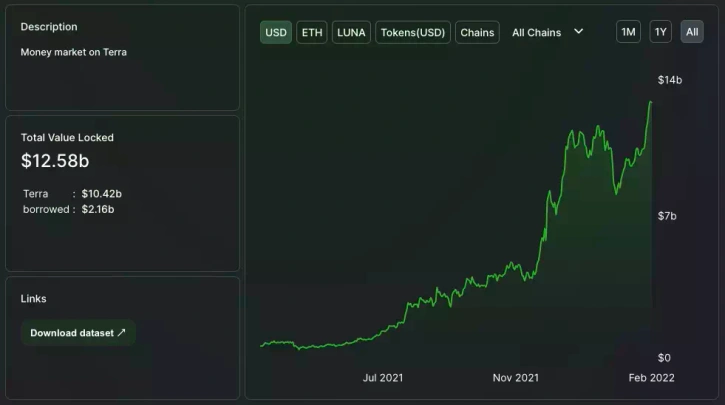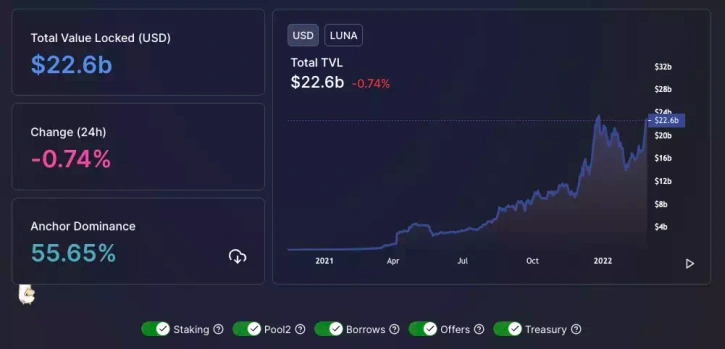What Is TVL? Total Value Locked Meaning, Calculation & Examples

TVL stands for total value locked and measures the overall amount of cryptocurrency assets deposited in a specific decentralized finance, or DeFi, protocol or network.
The DeFi world is full of confusing acronyms: DEX, dApp, ETH, FOMO, ICO, KYC, LP, P2P, and TVL, to name a few. And simply knowing what the abbreviation stands for does not explain the core concept, or what TVL is.
In this article, we’ll answer questions related to TVL, including:
- What Is TVL? What Does TVL Mean?
- Where Does TVL Come From? (TVL Sources)
- How Is TVL Calculated?
- What Is an Example of TVL?
- What’s the Best Place to Find TVL Data?
What Is TVL? What Does TVL Mean?
TVL, or total value locked, is the total amount of money, typically measured in U.S. dollars, flowing through a specific DeFi protocol or network.
The word “locked” is misleading. Unlike staking where users wait a specific number of hours or days to withdraw their “locked” deposits, TVL counts the value of all tokens currently deposited on the protocol or network, including those that are not currently staked or “locked” (like LP tokens with instant withdrawal).
TVL attempts to measure the overall importance of a protocol or network in relation to the rest of the DeFi space. Comparing one protocol’s or network’s TVL to another helps to determine which is getting more attention, in the form of monetary contribution, from the DeFi community. Typically, the larger the TVL, the better for the protocol or network.
Fluctuations in TVL are constant, as total value locked is typically calculated in terms of U.S. dollars, but the underlying deposits are in crypto assets. Crypto assets – stablecoins being the exception – are speculative assets and increase or decrease in price every second, similar to stocks.
If Curve (the most popular protocol on Ethereum) has 1 million Ether, or ETH (Ethereum’s native token), deposited in its staking and liquidity pools and ETH is worth $3,000 (USD) each, Curve’s TVL is $3 billion. But ETH is volatile. In 15 minutes, the price of ETH spikes to $3,500. Now Curve’s total value locked is $3.5 billion, but the total amount of Ether deposited into the protocol is the same.
Since TVL is measured by the total value of the protocol or network in U.S. dollars, it measures both the popularity of the network’s native speculative token and the popularity of the protocol itself within that network. Anchor Protocol (the most popular protocol on Terra) could have 5 million LUNA (Terra’s native token) deposited in its staking and liquidity pools, but if LUNA is only worth $300, its total value locked would still be only half of Curve’s.
Where Does TVL Come From? TVL Sources
TVL adds a protocol’s or network’s overall value from staking, liquidity pools, borrowing collateral, and protocol treasuries.
Staking is when a user deposits a crypto asset into a protocol in exchange for a percentage return on that asset. This is sometimes referred to as yield farming. When the asset is staked on the protocol, it counts toward the protocol’s TVL.
Liquidity pools are most popular in decentralized exchanges, or DEXs. Users deposit two crypto assets into a pool in exchange for a percentage return on those assets. The return comes from the swap fees that other users pay when converting from one crypto asset to another. When a user deposits two crypto assets into the protocol in exchange for LP tokens, it counts toward the protocol’s TVL.
Borrowing does not count toward a protocol’s TVL, but the collateral used to borrow crypto assets does. In order to borrow from a protocol, a user must first provide collateral in case of a liquidation event. The user deposits a crypto asset into the protocol in exchange for another crypto asset. When the value of the borrowed asset is paid back in full, the collateral is unlocked. The locked collateral counts toward the protocol’s TVL.
The protocol’s treasury does count toward TVL if the crypto asset is not the protocol’s own governance token and the crypto asset is not vested or fixed already.
How Is TVL Calculated?
Calculating TVL is simple for both protocols and networks.
For protocols, add up all of the total crypto assets deposited from staking, liquidity pools, borrowing collateral, and protocol treasuries.
Staking deposits + liquidity pool deposits + borrowing collateral + unvested, non-governance token protocol treasury assets = TVL
Do not include borrowed crypto assets that have not been deposited back into the protocol.
For networks, add up all of the TVLs for each protocol.
Protocol 1 + Protocol 2 + Protocol 3 + … = TVL
TVL Example
To help understand how TVL works, let’s take a look at Anchor Protocol on Terra.
Information from DeFi Llama on Feb. 28, 2022.
Anchor Protocol’s total value locked is equal to $12.58 billion, which represents over 50 percent of the entire Terra ecosystem (this number is not entirely accurate since DeFi Llama is missing certain Terra protocols).
There are currently four total assets available on Anchor Protocol: UST (Terra’s native stablecoin), ANC (Anchor Protocol’s governance token), bLUNA (bonded LUNA), and bETH (bonded ETH).
According to Anchor Protocol’s dashboard, there is nearly $8 billion in total UST deposits (earning 19-20% interest, similar to a savings account on steroids) and $2 billion in total UST borrowings. In order to borrow, users must provide collateral, and there is currently $4.6 billion in total collateral value on Anchor Protocol.
Of that total collateral value, $3.9 billion is from bLUNA and $726 million is from bETH.
Total borrow value does not count toward Anchor Protocol’s TVL because the borrowed funds can be moved off the protocol and used elsewhere. Anchor Protocol only has control of total deposit value and total collateral value.
Terra’s TVL (again, not entirely accurate, but good enough for this example) is $22.6 billion. The total value locked in a network comes from all of the network’s combined protocols.
Terra currently has 21 total protocols (again, not entirely accurate) accounting for $22.6 billion in TVL, $12.58 billion of which is coming from Anchor Protocol.
Understanding TVL can help us determine which protocols are the most important for overall network health, how certain protocols and networks are performing in relation to others, and where crypto funds are flowing on a daily, weekly, monthly, or yearly basis.
Where to Find TVL Data
Tracking down accurate TVL data is difficult. Here are four DeFi tools to find TVL data:
Lucky Trader is not affiliated with the below websites and cannot guarantee the accuracy of their information.
DeFi Llama: DeFi Llama is a DeFi TVL aggregator that provides total value locked calculations for both protocols and networks.
DeFi Pulse: DeFi Pulse is an analytics and rankings aggregator for mostly Ethereum-based DeFi protocols.
CoinGecko: CoinGecko is one of the largest cryptocurrency data aggregators in the world. It recently added TVL, Fully Diluted Valuation / TVL ratios, and Market Cap / TVL ratios.
DeBank: DeBank is a multi-chain portfolio tracker with a large number of DeFi protocols and assets. You must connect your wallet in order to use the platform.



